
LIVING IN LAPLAND – Experiencing the Polar Night
As someone who lived in Finnish Lapland, more than 300km above the Arctic circle, for the whole winter season, there’s one question I got asked very often: “but how do you cope with the dark?” Even more than the cold, the idea of the long and dark winter nights of the Arctic seems to be something which frightens most people.
The Polar night is the time of the year when the sun doesn’t rise above the horizon when you live above the Arctic circle. The further North you are, the longer the Polar night will be. In Ivalo, where I was living, there are about 40 days of Polar night in a row, which technically means that you can’t see the sun at all for more than a month time, from the beginning of December (or even late November) to mid-January. On the contrary, in summer it’s just the opposite: the sun stays up all the time, which means, in the case of Ivalo, about 40 days of constant daylight. This is called the White nights. But I’ve never been lucky enough yet to experience this aspect of the phenomenon, so I’ll stick to what I know. So how did I feel about this long and dark Polar night?


To begin with, I need to say that I’m most definitely a winter person. Winter has always been my favourite time of the year, with adventures in the snow, and the perspective of long and cosy evenings inside. For it’s this time of the year when you can light as many candles as you want, eat good food without feeling guilty and get comfortable in front of the fireplace. I’ve never been subject to any kind of winter depression neither, so I suppose all this makes it a little bit easier to bear. This kind of experience is obviously different for everyone and depends on many factors and also a lot on your sensibility and the way you feel and perceive things. If you are a summer lover, if you already know that your body and mind tend to function better when spring arrives and the amount of light is more important, then most chances are that you will not like and put up with the Polar Night in a good way.
But even though I love winter and the perspective of a long dark winter didn’t frighten me before flying to Lapland in November, I must admit that I did feel the effects of the Polar Night both on my body and my mind throughout the season. During December and the first half of January, we had indeed very little natural light: most of the time between 2 and 6 hours of “brightness”. Because yes, Polar Night doesn’t mean that it’s completely dark and pitch black all the time! On the contrary, when the sky are clear (well, not that often in wintertime) it’s ALMOST like normal daylight, except that you can’t see the sun and that it doesn’t last more than a few hours. Most of the time, between 10 or 11am and 2 or 3pm it’s bright enough for normal outdoor activities because of light scattering and refraction made by the upper atmosphere. So no sun, but still pretty colours in the sky. Don’t imagine Polar Night as pitch black but more as something eerily and magically blue. This time of the day is called “civil twilight”, it’s just like a very long twilight, when darkness takes on shades of blue, purple, pink, and which carries on for several hours. In Finnish, they call it “Kaamos”.
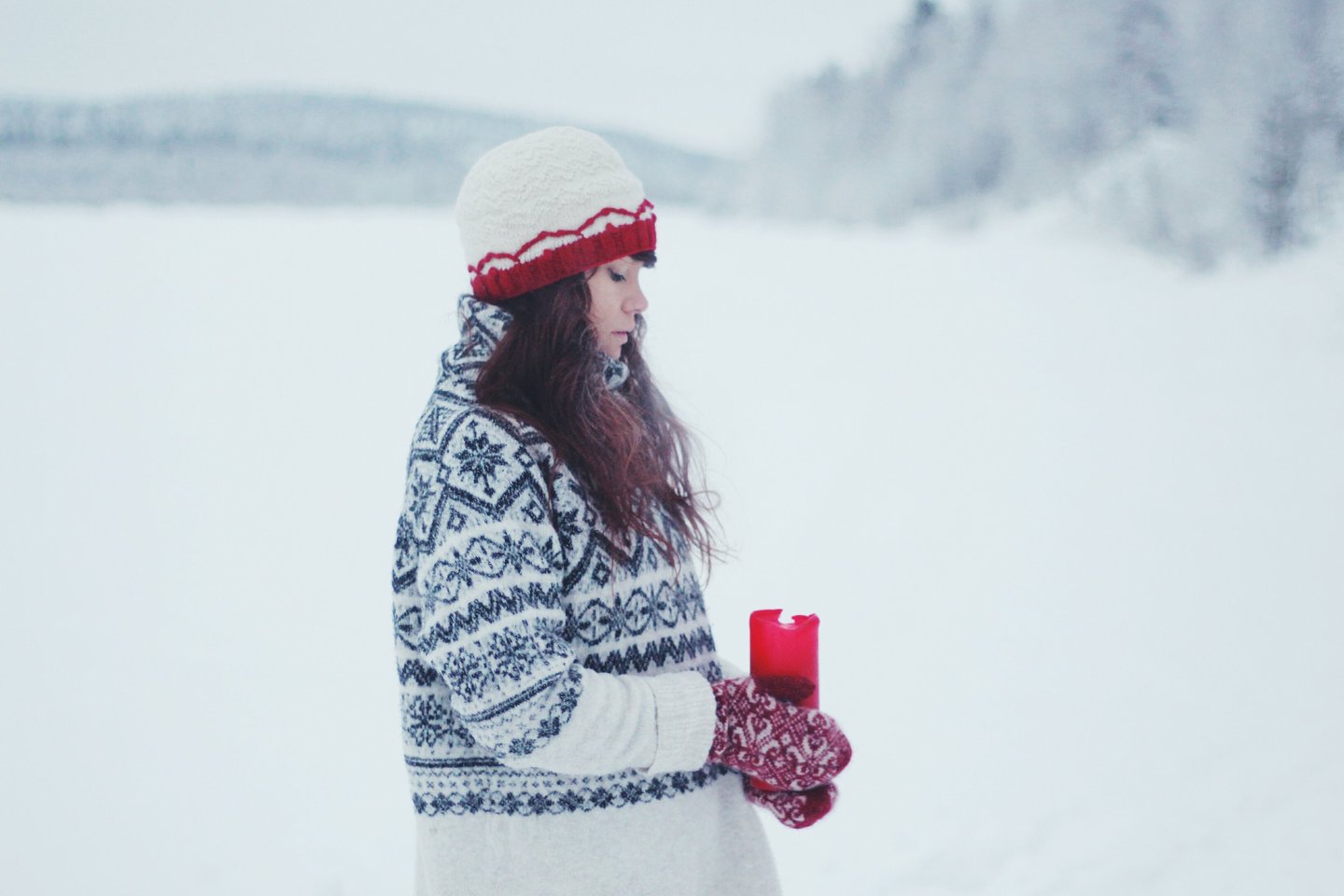

One could also expect that once these few hours of “almost daylight” are over (usually around 2 or 3pm) it gets pitch black for good. Well, not exactly. On cloudy days, you feel like it gets totally dark very fast. These are typically the most difficult days to cope with. It’s just grey and then black. And you really feel like there was no daylight at all. But when the sky is clear, you can get amazing colours in the sky, like a constant sunrise or sunset (without the sun of course). And then when it gets dark, and that the stars and the moon are up and shining and twinkling in the Arctic sky, the light they produce gets reflected by the white blanket of snow, and then nights are not dark anymore. You can get surprised at how easy it is to wander in the forest or on the fells at night in Lapland without even needing a torch. The moon watches over you in the dark.
And of course, if you are lucky, and the Northern lights are up dancing in the sky, you will get even more magical light brightnening up the cold and dark winter nights.
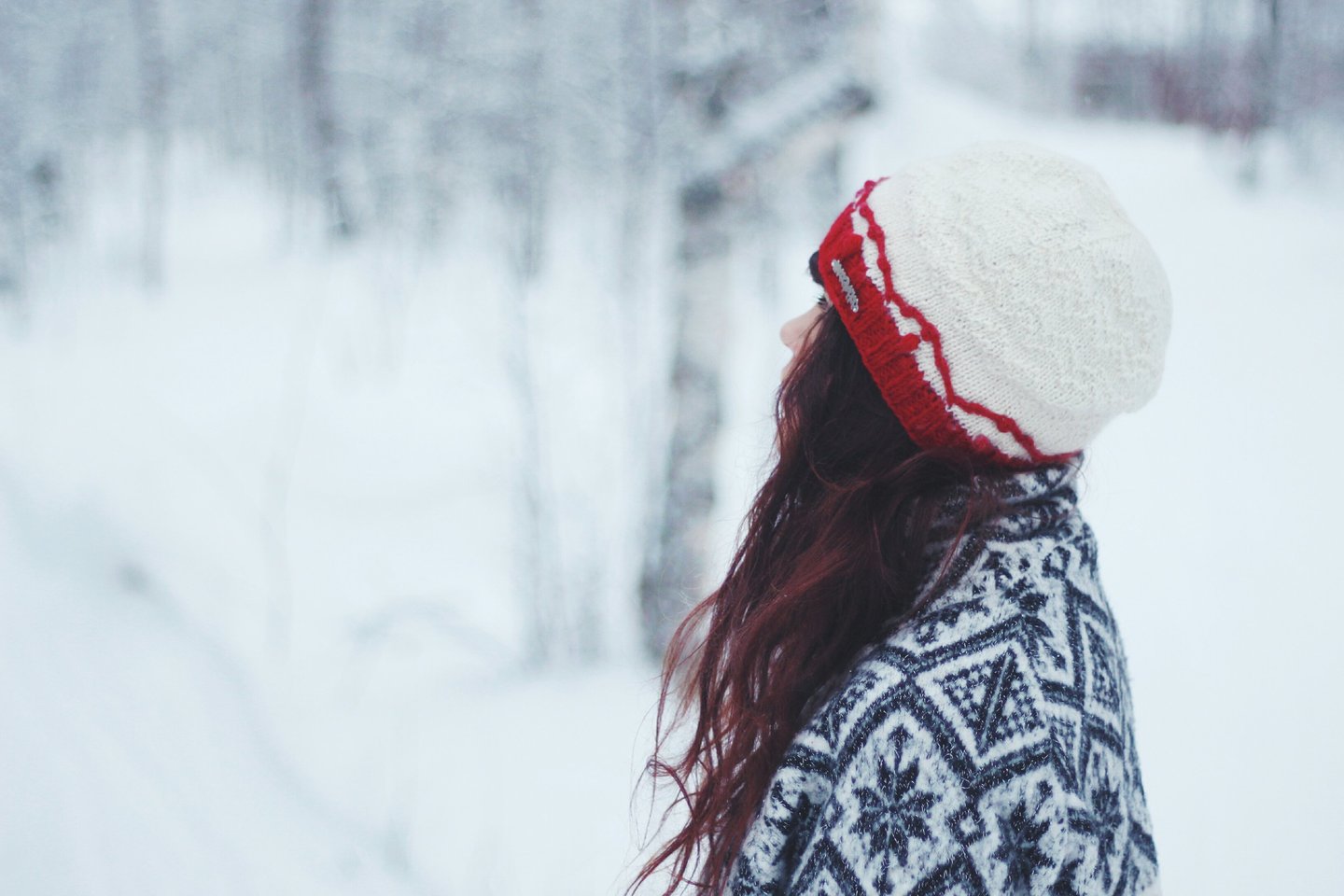

I know this all sounds very magical and maybe makes you want to move to Lapland immediately. But both your body and your mind won’t get as much light as they are used to get in Southern Europe or elsewhere, despite the many Northern lights you can see. And this will definitely affects you, and it can be in many possible ways. As far as I am concerned, I was feeling very tired, even exhausted, all the time in December/early January. Even though I was sometimes sleeping 8, 9 or 10+ hours at night (which is a lot for me) I never felt like I was really resting. This was the worst of the several effects the lack of light had on me. I was also sometimes feeling a little bit demotivated, because I was always working the few hours of daylight we had, so when I was coming home in the evening (or in the middle of the afternoon, but it’s already dark outside) I wanted to do nothing but curl up in a blanket with a book or a movie. I can safely say that my sofa and my bed were my best friends during this period. The dark, and the fact that you spend a lot more time inside than what you can usually do, also makes you want to eat all the time… But isn’t winter the best time to treat yourself to good food?
Here’s for me. The worst to cope with was undoubtedly the extreme and long lasting tiredness. But for some people it can be far worse, you can be hit by severe cases of winter depression because of the lack of light. It all depends on how you handle it.
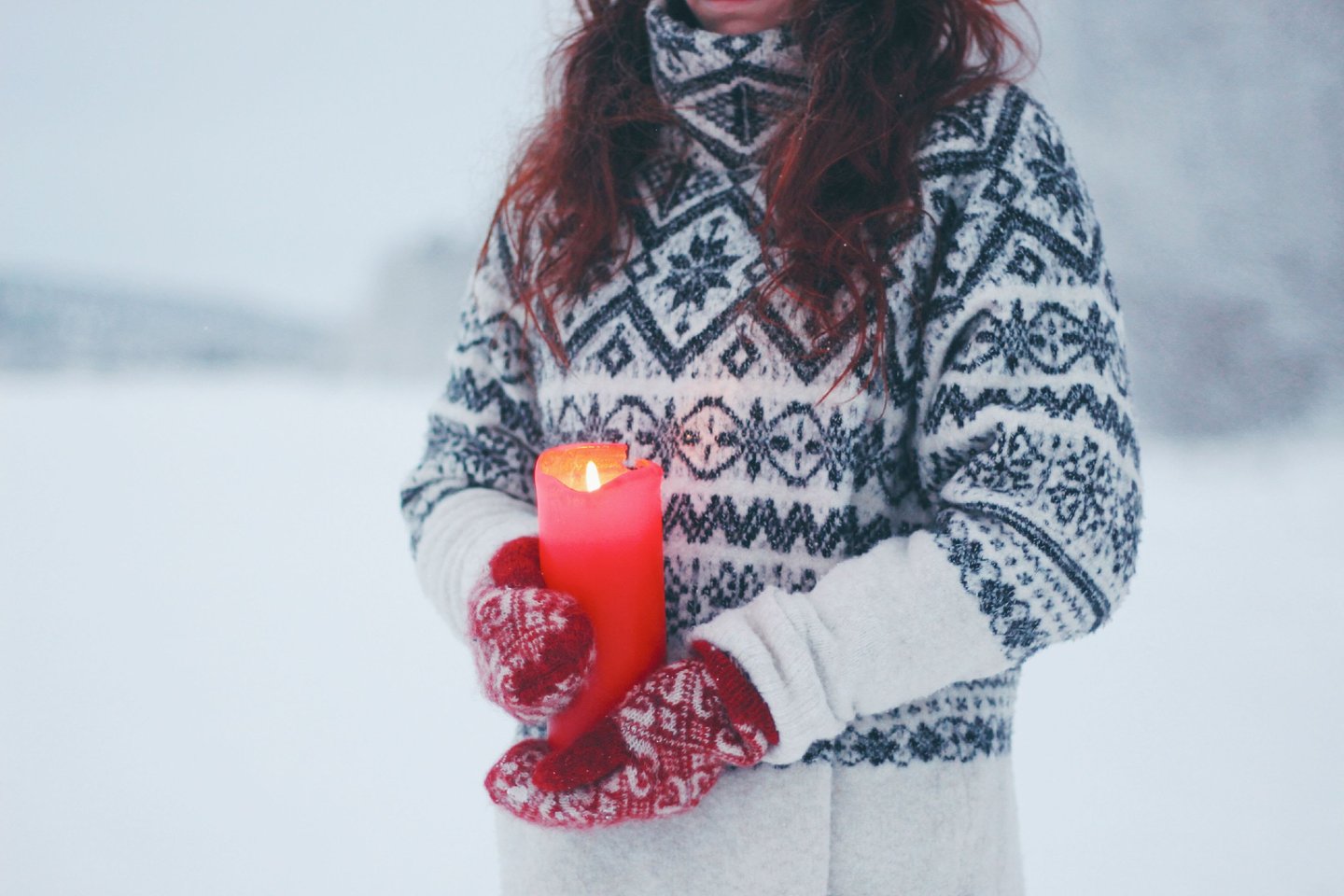

There are also small ways to make the dark less heavy and oppressive. My advice would be to take a walk outside in the snow as soon as you feel like it or as soon as you need it. The world, once wrapped in its white blanket of snow, somehow feels softer and muffled, more protective. Make the most of Christmas time when people make an extra effort to bring light in their homes and garden by lightning up a Christmas tree outside, hanging traditional paper star shaped lamps to their windows and putting fairy lights and lanterns pretty much everywhere to beat the darkness even further back. In Lapland people tend to keep the Christmas decorations until mid-January, even longer sometimes. Everything feels more comfortable and the long nights are a little bit easier to bear. Even in your own home, don’t hesitate to make everything look cosy and intimate: light up some candles in every corner, make yourself some presents and treat yourself to comfort food. I think the better you allow yourself to live fully the slow-paced moments that your body requires, the better you will go through this long month of darkness. And soon, you will start noticing a change: from mid-January the light slowly starts to come back, the sun makes a shy returns then grows bolder and bolder by the day, days become longer, the weather slowly gets a bit warmer. You no longer focus on the long hours of darkness but on the growing hours of daylight. You’ve grown accustomed to the night, and it no longer bothers you. You’ve made it.

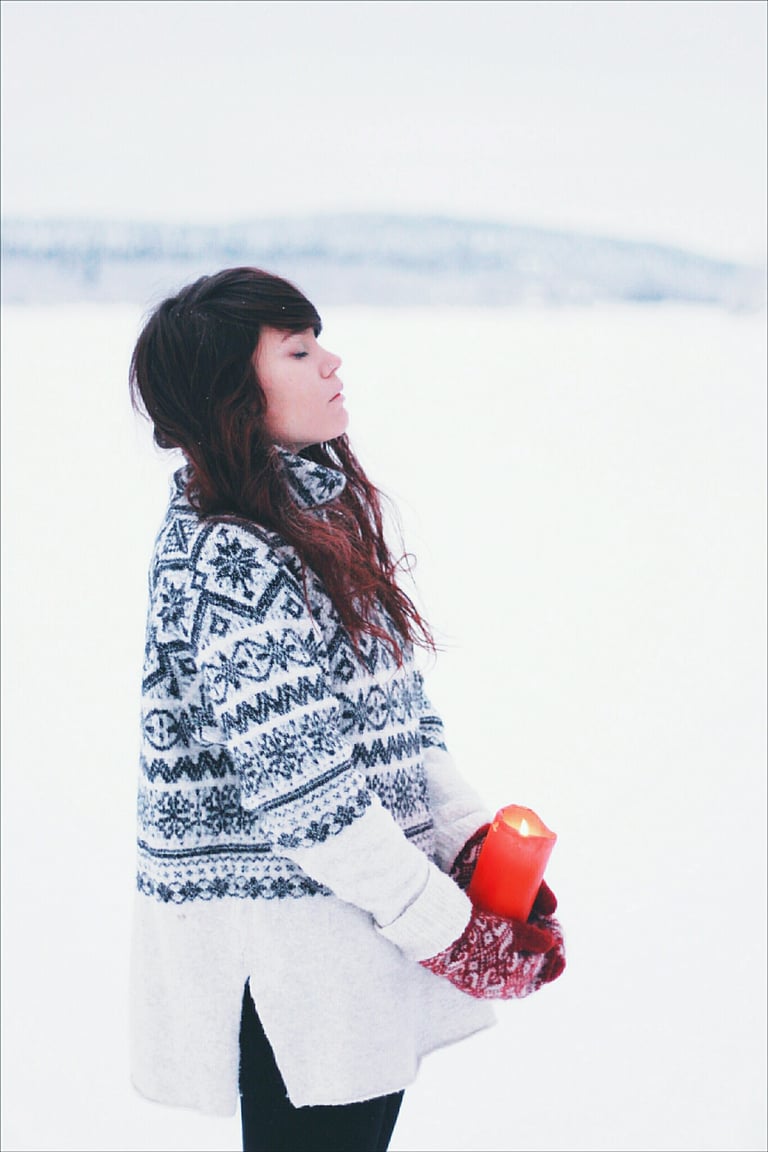
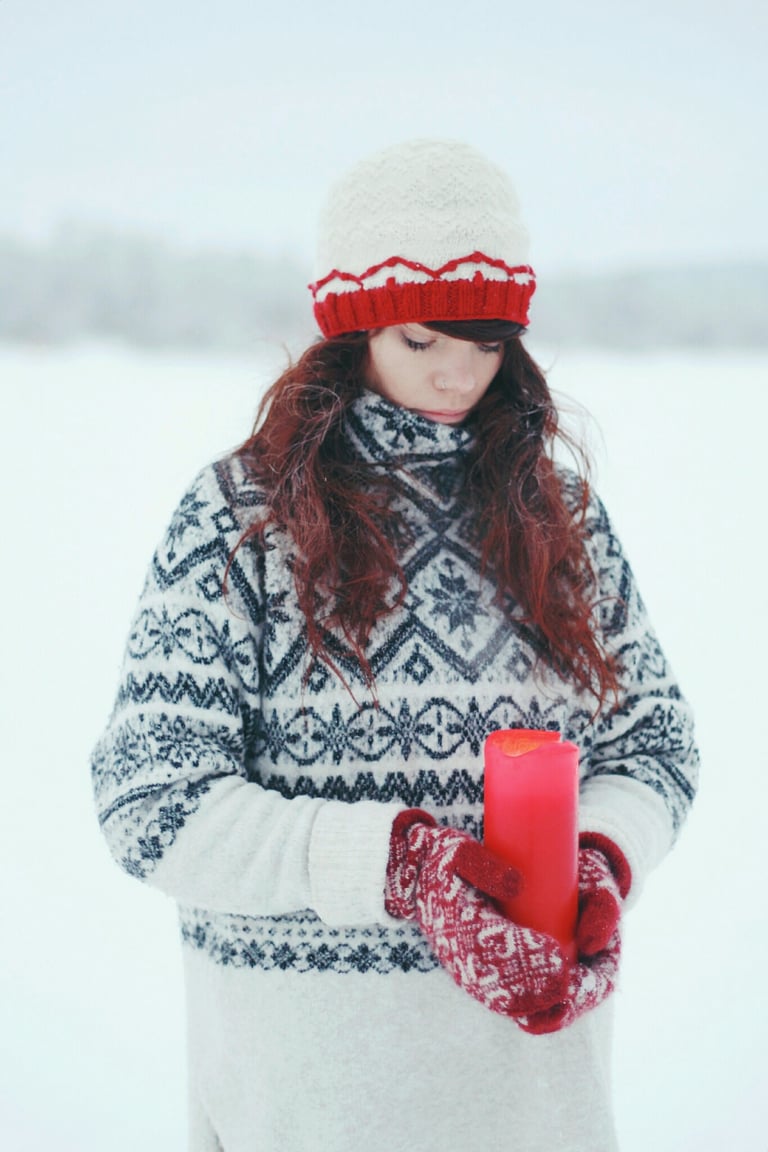

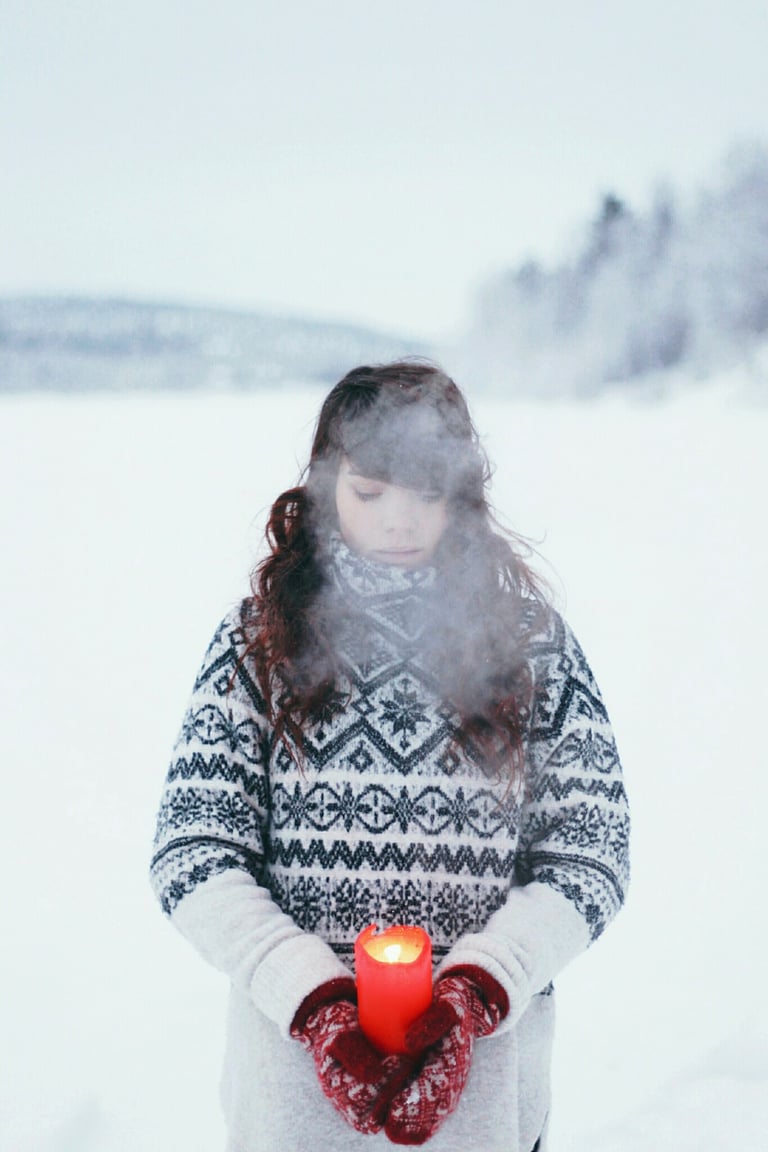







LIVING IN LAPLAND – Experiencing the Polar Night
6 min read